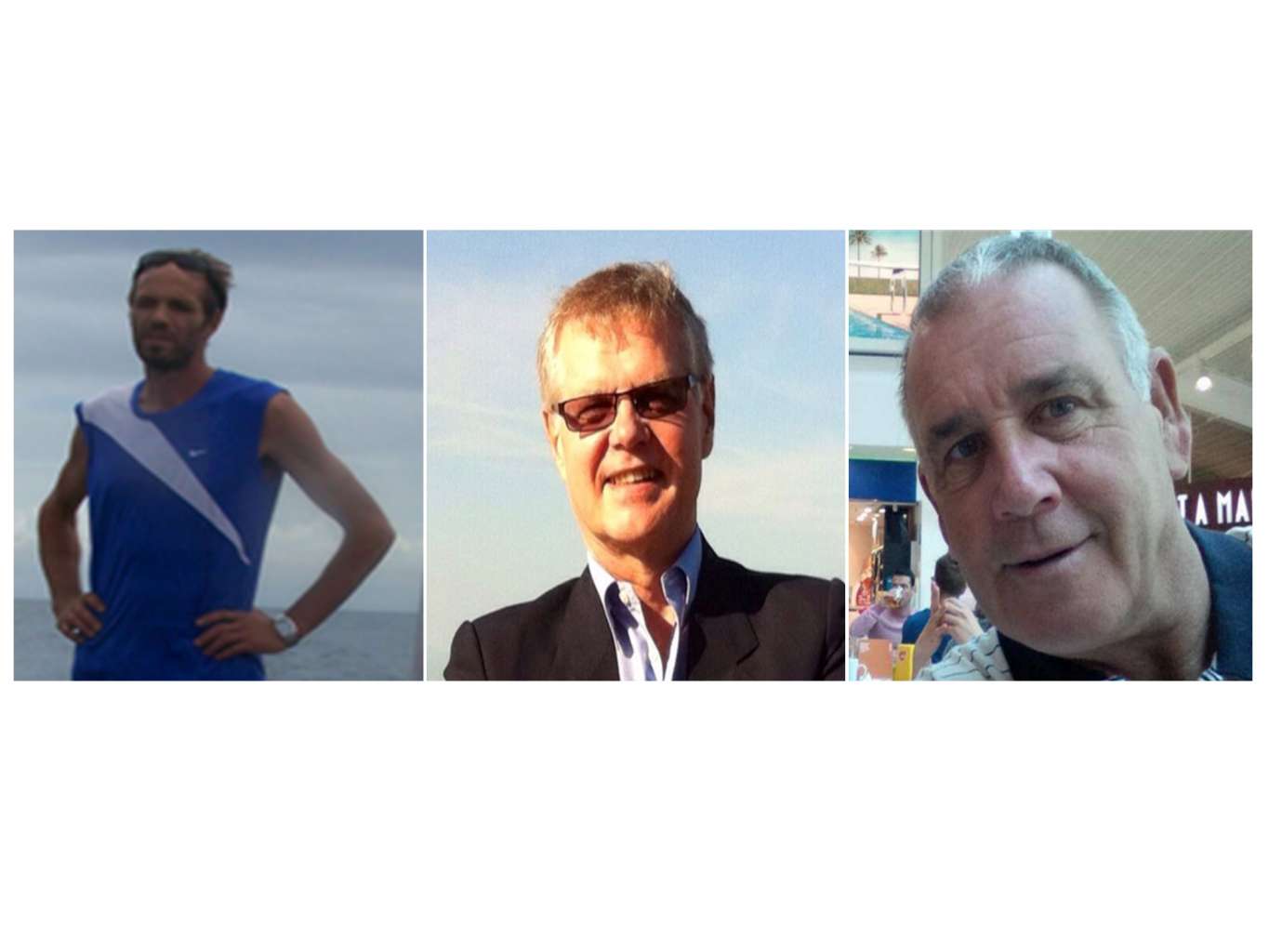18 Philippine soldiers killed in fierce clashes with Abu Sayyaf
Sign up now: Get insights on Asia's fast-moving developments

From left: Norwegian employee Kjartan Sekkinstad, with Canadian tourists John Ridsdel and Robert Hall, the three kidnapped foreigners who were seized by gunmen from aboard yachts, on Sept 21, 2015.
PHOTO: AFP
Follow topic:
MANILA - At least 18 soldiers and five Islamist militants were killed in a fierce 10-hour firefight between government forces and the Abu Sayyaf group in Basilan province, 1,400km south of the capital Manila, on Saturday (April 9).
More than 50 soldiers were wounded, according to Major Filemon Tan, spokesman of the military's Western Mindanao Command.
"Initially, I confirm that there was an encounter in barangay (village) Baguindan, Tipo Tipo (town), Basilan, with results on the government side: 18 KIA (killed in action), 53 (wounded in action)," he said.
He said among the militants killed were Moroccan Mohammad Khatfab and Ubaida Hapilon, reportedly a son of a senior Abu Sayyaf leader Isnilon Hapilon.
The Philippine Daily Inquirer reported that an entire platoon "was wiped out", and that four of the soldiers killed were beheaded.
Lieutenant-Colonel Benedicto Manquiquis said the clashes began at 7.55am on Saturday, when the Army's 4th Special Forces Battalion and 44th Infantry Battalion came across over 100 Abu Sayyaf fighters.
The soldiers had been hunting the Abu Sayyaf across across Basilan and in nearby Joso islands for two weeks, hoping to free at least 18 foreigners being held by the group.
Among those held were Canadians Robert Hall, 50, and John Ridsdel, 68, and Norwegian Kjartan Sekkingstad, 56, whom the Abu Sayyaf had threatened to behead if their demands for ransom were not met by Friday (April 8).
The clashes came a day after retired Italian priest Rolando del Torchio - held hostage by the Abu Sayyaf for six months - were found aboard a ferry docked on Jolo. Some 130 million pesos (S$3.8 million) were reportedly paid for his release.
The Abu Sayyaf was formed by disgruntled Moro Islamic fighters in 1991, with Al-Qaeda funding. However, it did not gain prominence till May 2000, when it attacked a dive resort in Sipadan, Malaysia, taking 21 hostages.
Over the years, US-backed military campaigns had managed to decimate the group's leadership.
In recent years, however, it has managed to regain some of its strength from ransoms it managed to raise from traders it kidnapped in Sabah and in Mindanao.
The Basilan-based Abu Sayyaf are led by Isnilon Hapilon, one of its most senior figures who has pledged allegiance to Islamic State in Iraq and Syria (ISIS), and who is also wanted by the US government for the kidnapping and murder of Americans.
Four battalions of militants from the Philippines and Malaysia were said to have merged into a single unit under a leadership council now being steered by Hapilon, as they seek to declare a South-east Asia "wilayat", or province, of ISIS.
rdancel@sph.com.sg

